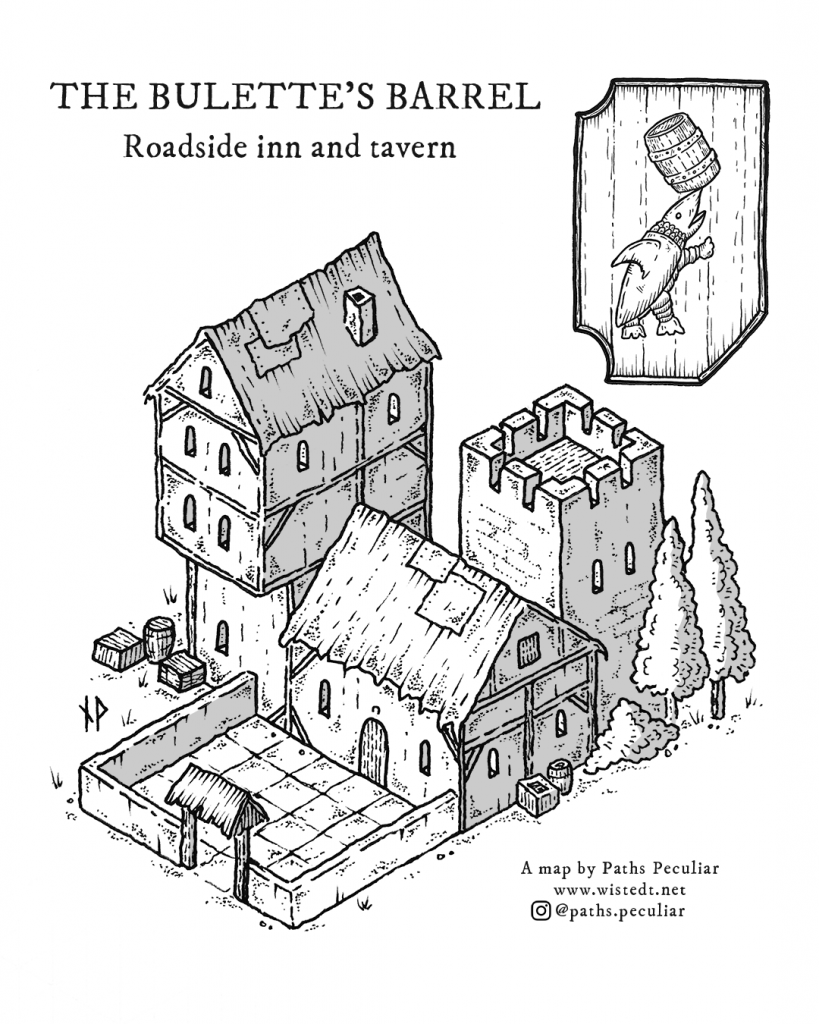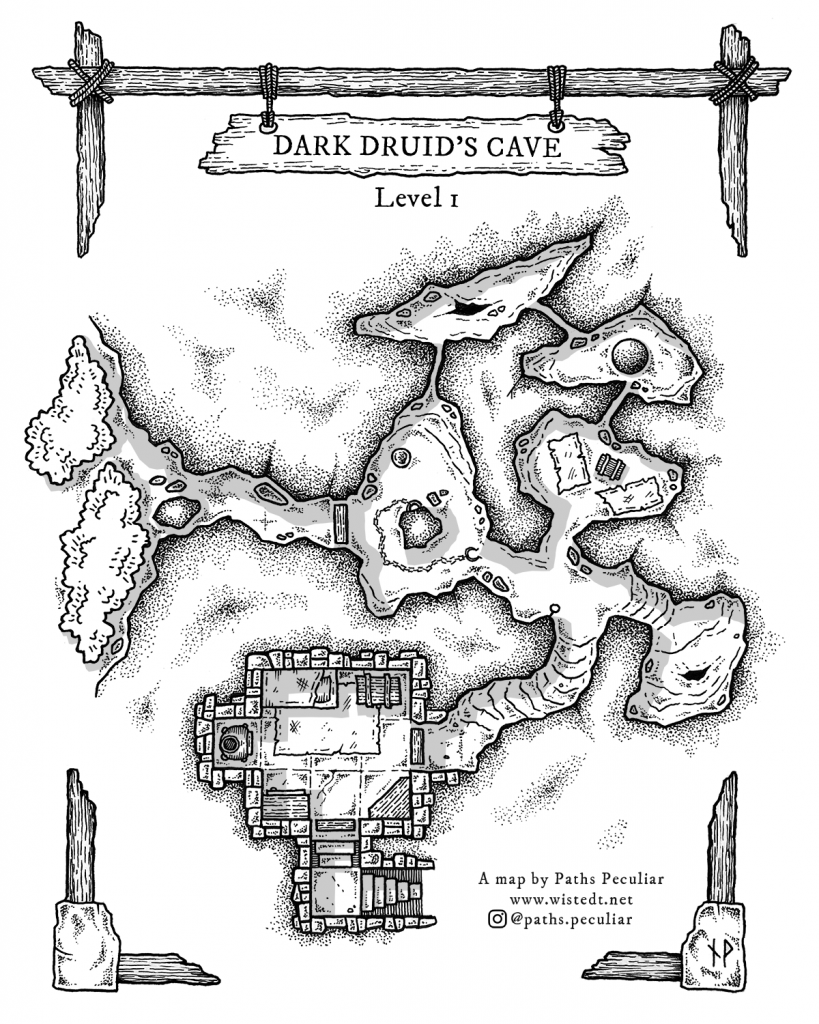How To Create A Dnd World
A wonderful and inspiring part of the roleplaying game hobby is worldbuilding, however many dungeon masters feel it's a daunting task to create their own campaign world. In this guide I will do my best to outline my method of building fantasy worlds. I hope it will help you by making worldbuilding more inspiring and less of a chore.
My core worldbuilding philosophy: start small and expand
In my opinion the biggest mistake many worldbuilders do is biting off more than they can chew. If you create a huge world map and then try to fill it with everything that could possibly exist in a world you tend to either overwork yourself and lose interest, or stretch your imagination too far and end up with something quite bland "like butter scraped over too much bread".
Not only does "starting big" risk draining your inspiration, it is also (most of the time) unnecessary. A typical adventuring party in a quasi-medieval D&D campaign won't visit every far corner of the world, and even if they do this is not something you need to plan out years in advance.
A campaign world isn't necessarily a "world". It might not even be a country. It might start out as just a small town and its immediate surroundings. We could call it a "campaign environment". It might or might not develop into a world but for starters let's concentrate on what you need rather than what you might need in the future.
What you need is a playground for your players' first few adventures.
A list of things that you probably need to know right now:
- The overall theme or genre (high/low/dark fantasy, steampunk, etc.)
- What monsters lurk in the woods just north of town
- The name of the local innkeeper and some other important NPCs
- The most relevant deity in your starting region, and how it is worshipped
A list of things you probably don't need to know right now:
- The name of the king in a neighbouring country
- What lies beyond the sea or the mountains far to the west
- Every significant faction in the country and how they interact with each other
- Details on every organized religion in the world
Creating your homebrew campaign world – a step-by-step guide
Step 1 – the overland map
Create an overland map or get one online. A few (7-10 or so) hexagons of terrain will do. Each hex is 6 miles. Fill the hexes with the general type of terrain you want for your theatre. Woods, mountains, grasslands, hills, moor, swamps, etc. Add a few interesting landmarks.
Note: you don't need to use hexes if you don't like them. I find them really useful for making maps and tracking both travel and exploration in a campaign, but if you prefer to measure distance differently go right ahead and choose another method.

Step 2 – the starting town
Create a small town and a handful of non-player characters (NPCs). Some of these NPCs need help with stuff, and they need adventurers to take care of their problems. The NPCs are some of the best roleplaying tools you have to shape your campaign and influence players/player characters.
Here's a town you can use if you don't want to create one from scratch: Link to Fourtower Bridge.

Step 3 – adventure sites
Make up a few adventure sites and connect some of them to the NPCs in town. A deserted mine, a desecrated temple, a ruined old tower, a brigand hideout, etc. Draw some simple location maps and mark the sites on your overland map. Place treasure and monsters.
Note: You don't have to make up all of these adventure sites from scratch. There are plenty of free resources online, or you could buy short adventures from websites like DriveThruRPG.com. You can also find a lot of free maps and adventure sites on this website, for example The Haunted Cloister, that can easily be dropped into most fantasy campaigns.

Step 4 – build your world by playing in it
Start playing. The player characters are a bunch of adventurers in search of gold and glory. They arrive in town and have just enough money to spend the night at the inn. Drop rumours on them. Let townsfolk seek their aid. And then let them decide what to do next.
Breathe life into your little world but don't plan everything ahead. Roll on random tables. You deserve to be surprised just as much as the players do. Between games always keep a notepad with you. Write down cool stuff you come up with. Inject it into your campaign. As you come up with new places to explore, draw new hexagons or add to existing ones on your overland map.
Ask the players what they want to do. Let them inspire you as you expand on the overland map. What do they look for, and how can they get it? What lies beyond the mountains in the west? What's the origin of the strange idol they found in the abandoned mine?
Build as you go. Make stuff up. Allow yourself to get surprised. Use free stuff from the community. Work with your players. Build a world – not a story. You don't need an endgame yet (if ever). You have a lot to discover, so enjoy the ride.
Bonus tools: random tables and rumours
Random encounter tables
Random encounter tables have been a staple of fantasy roleplaying games for many years. They are not just relics of old, but actually really good tools for worldbuilding that animate your world and make it feel more dynamic. By creating random encounter tables you define what creatures inhabit an area of your world and you make it significant. The probability of encountering a certain type of creature tells a lot about your world.
If there's a high risk of encountering orcs in your campaign environment it should be reflected in the encounter tables, let's have a look at an example:
Random encounter table – west moorland road
Roll 2d6
| 2-6 | No encounter |
| 7-8 | Merchant caravan |
| 9-10 | Orc raiding party (2d6 orcs) |
| 11 | Troll |
| 12 | Hill giant |
What does the above random encounter table tell us about the campaign environment? Well, first of all it seems commerce and travel is a thing in this part of the world – there's a fair chance of bumping into merchants. We also learn that orcs seem to be the dominant non-human race in the area, and that they're on the prowl making travel risky (but not risky enough to fully deter humans from travelling). There are also more powerful monsters (trolls and hill giants) lurking nearby, but apparently they're not common enough to outcompete the orcs – perhaps they are allies? It's just a simple table, but all of the above are important and defining elements of your worldbuilding.
Remember that you can have random tables for more things than encounters, such as weather and other types of events. For example, a random weather table tells a lot about the climate in your campaign environment. If you're aiming for an occult feel to your campaign perhaps a table of mystic omens would make sense to create.
Rumours
The Internet doesn't exist in a fantasy medieval world, and the adventurers can't google "nearby adventure sites and treasure". Rumours are perhaps the most common source of information and will play an important role in determining how the players will decide on what to do in your world. They do not know about the old tower ruin two hexes to the north unless you somehow tell them about it, so creating such rumours for them to pick up when interacting with NPCs is a good way of helping them learn about the world beyond the hex they're currently exploring. Again: The NPCs are some of the best roleplaying tools you have to shape your campaign and influence players/player characters. Plant rumours to guide players without forcing them in a certain direction.
Not all rumours are (nor should be) true. Some have just grains of truth in them, and some are just nonsense. However all of them help bring your world to life.
Support my work – buy me a beer (if you want)
If you like my stuff and want to give me a tip to cheer me on, please click the button below. Please note that tipping is appreciated, but not expected. Don't donate if you're short on cash, I'm sharing content because I like to, not to make money.
Like my art? Follow me on Instagram for more frequent updates
Stay awhile, there's a lot of content on the blog. Here's the latest posts:
How To Create A Dnd World
Source: https://www.wistedt.net/2020/12/13/how-to-create-a-dd-campaign-world-a-step-by-step-guide/
Posted by: ungerherhumbrod.blogspot.com

0 Response to "How To Create A Dnd World"
Post a Comment